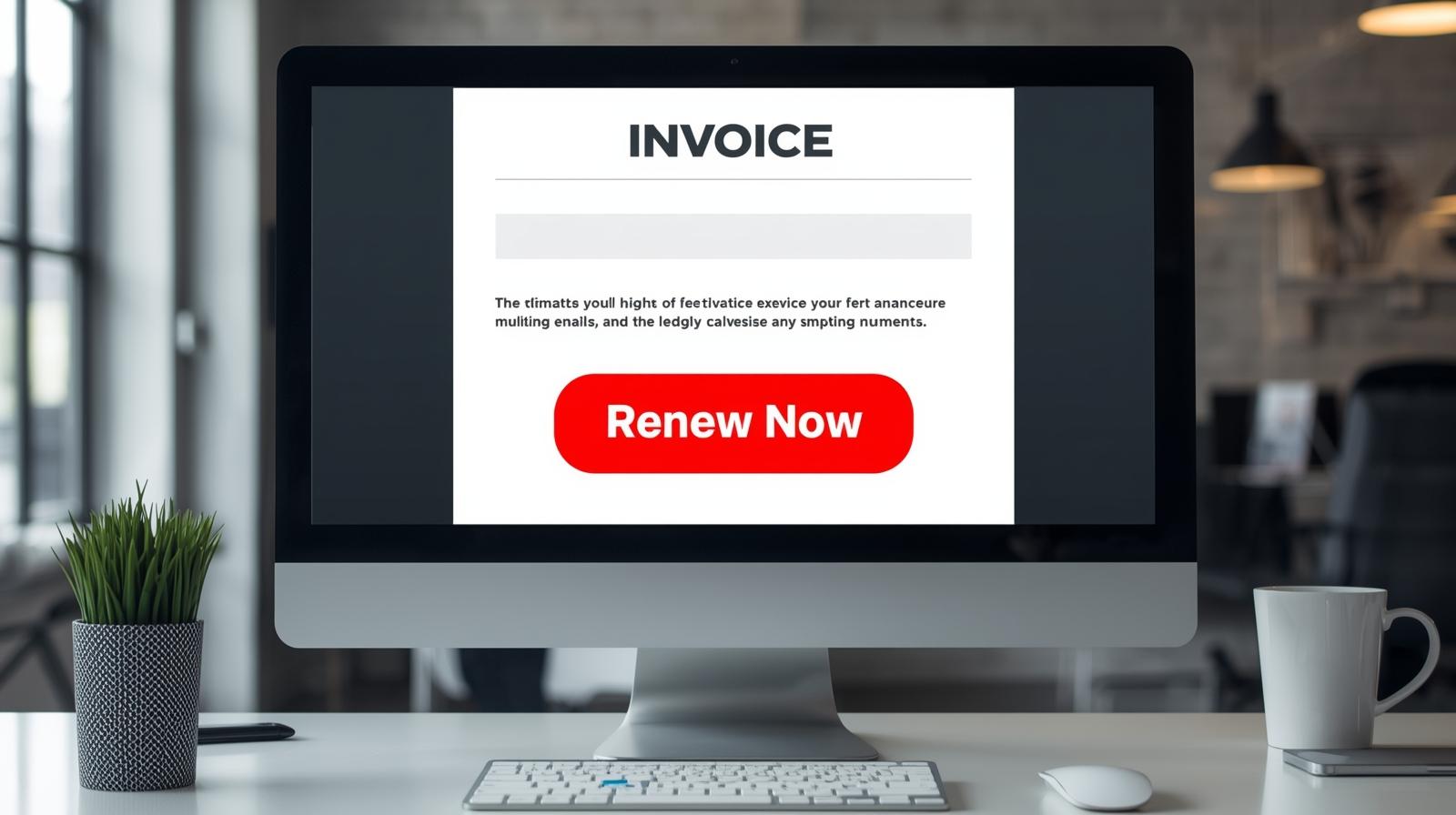Here’s your final SEO-optimized version of the Fake Invoice Scams article with live, relevant internal links from your own site woven in naturally.
All links follow best practice: contextual, do-follow, descriptive anchor text (no keyword stuffing).
You can paste this directly into WordPress in “Text/HTML” view.
Fake Invoice Scams: Stop Paying Phony Renewals
Inboxes are full of invoices, subscription notices, and renewal alerts. Most are legitimate, but a growing number are not. Fake invoice scams have become one of the most common online fraud tactics in 2025, costing individuals and small businesses millions each year. These scams are designed to trick you into paying for services you never ordered or renewing subscriptions that don’t exist.
The setup is simple. You receive an email that looks like it came from a trusted company—maybe Microsoft, Norton, QuickBooks, or even a streaming service. The message says your subscription is about to renew, often with a realistic invoice attached or a link to a “renewal portal.” Everything looks official: the logo, sender name, invoice format, even the small print at the bottom. The problem is that it’s all fake. The moment you click “Renew Now,” you risk losing money or giving scammers access to your banking details.
If you’ve seen similar phishing attempts, the free scam-link analyzer on the
ScamBuster MVP homepage
lets you upload any suspicious invoice or URL and instantly check if it’s part of a known fraud pattern.
Most victims don’t fall for these scams because they’re careless. They fall for them because the emails look routine and convincing. Many businesses process dozens of invoices a day, and scammers exploit that speed. Their goal is to slip one fake invoice into your normal workflow. One wrong click can authorize a payment to a criminal account.
Common variations include:
For another look at social-engineering tactics, read
AI Romance Scams: When Chatbots Pretend to Love.
Both scams rely on urgency and emotional trust—one targets the heart, the other your business habits.
The danger isn’t just paying a fake invoice—it’s what comes next. Once scammers confirm that your email address is active and that you respond to invoices, they escalate. Some follow up with targeted spear-phishing attempts or malware-laden attachments that capture login credentials and financial data.
Recognizing fake invoices requires focus and a few reliable habits. Check the sender address carefully. Look for unusual formatting, misspelled names, or inconsistent fonts. Verify payment instructions; legitimate invoices reference existing account numbers, while fakes use vague “Customer ID” labels.
Whenever an invoice looks suspicious, stop and confirm through a separate channel. If it claims to come from your software vendor, log in to your official account instead of clicking the email link. For business invoices, call your vendor using the number on file, not the one in the message.
Small businesses can prevent major losses by adopting simple safeguards. Require two people to approve all outgoing payments and centralize invoice submissions to one secure email. For a deeper look at employment-related scams that also target companies, see
Fake Job Offer Scams in 2025: What to Watch For.
Banks and payment processors now flag unusual transfers, but prevention still starts at the inbox level. Education and verification are your first line of defense.
Government agencies including the FTC and FBI report that invoice fraud ranks among the top business-email-compromise complaints each year. Report suspicious messages to the legitimate company and the authorities as soon as possible. Quick action can sometimes freeze fraudulent transfers before they clear.
Technology tools help, but awareness wins. The
ScamBuster MVP scanner
uses live threat-feed data and pattern analysis to detect fake billing links before you act. Upload questionable invoices for instant risk scoring and verification.
For more resources on protecting your digital identity, explore related guides:
• Tech-Support Scams: How Fake Agents Steal Data
• TikTok Crypto Scams: The Giveaway Trap Explained
Fake invoice scams rely on routine and urgency. They look normal and push you to act fast. Slow down, verify, and trust your instincts. If something feels off, it usually is. Every person and business that refuses to click without confirmation makes the scammer’s job harder—and keeps your money where it belongs.
Would you like me to do the same SEO-link pass for your AI Romance Scams article next so both posts interlink cleanly?
